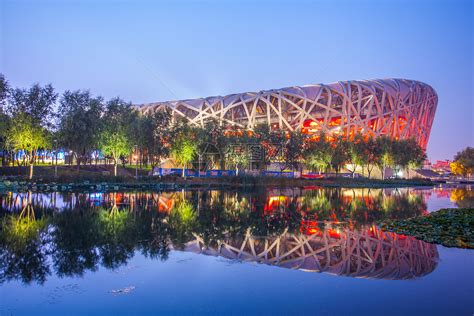The Beijing National Indoor Stadium, commonly known as the Beijing Gymnasium or simply Beijing Stadium, stands as an emblem of China's prowess in sports and architecture. Let's delve into the rich history, notable events, architectural features, and its significance within Beijing's sports landscape.
The Beijing National Indoor Stadium was constructed as one of the major venues for the 2008 Summer Olympics held in Beijing, China. Its design and construction were part of the extensive preparations to host one of the most significant sporting events globally. Designed by the renowned architect group, Beijing Institute of Architectural Design (BIAD), the stadium aimed not only to host Olympic events but also to leave a lasting architectural legacy.
The architectural design of the Beijing National Indoor Stadium is a blend of modern aesthetics and traditional Chinese influences. Its prominent feature is the distinctive saddleshaped roof, which symbolizes the ancient Chinese folding fan. This innovative roof design not only provides structural stability but also allows natural light to illuminate the interior, reducing the need for artificial lighting during the day.
Beyond its role as an Olympic venue, the Beijing National Indoor Stadium serves as a versatile multipurpose arena. It hosts a wide array of sporting events, including basketball, volleyball, gymnastics, and table tennis, as well as concerts, exhibitions, and other entertainment events. Its flexible seating arrangement can accommodate various audience sizes, making it suitable for both largescale and intimate gatherings.
As one of the key venues for the 2008 Summer Olympics, the Beijing National Indoor Stadium holds a special place in the hearts of sports enthusiasts worldwide. It witnessed memorable moments of triumph and glory as athletes from around the globe competed for Olympic medals. The legacy of these historic events continues to inspire future generations of athletes and spectators alike.

Beyond its significance in the realm of sports, the Beijing National Indoor Stadium has become a cultural landmark synonymous with Beijing's modernization and global prominence. Its striking architecture has made it a popular tourist attraction, drawing visitors from across the globe to marvel at its design and explore its rich history.
In the years following the 2008 Olympics, the Beijing National Indoor Stadium remains a hub of sporting and cultural activities. It continues to host international tournaments, national championships, and cultural events, reaffirming its status as a dynamic and vibrant venue at the heart of Beijing's cultural and sporting landscape.
The Beijing National Indoor Stadium stands as a testament to China's commitment to sports excellence and architectural innovation. From its iconic design to its role in hosting prestigious events, it embodies the spirit of athleticism and cultural heritage. As a symbol of Olympic legacy and modernity, it will continue to inspire and captivate audiences for generations to come.

在足球的世界里,球星们不仅是场上的英雄,也是公众人物,他们的行为举止...

直播吧9月12日讯拉齐奥主帅巴罗尼接受了媒体的采访,对球队新援、阿森...

直播吧9月20日讯本轮中超北京国安客场3-1战胜梅州客家。第88分钟...

都说穷则思变,早就烂到根上的中国男足在世预赛遭遇耻辱性连败之后,对人...

北京时间9月23号,陈梦解锁“校长”身份,孙颖莎王楚钦也有新身份,马...